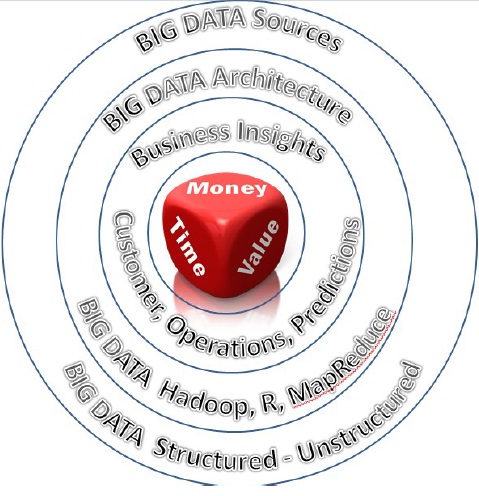Chapter 4 WHAT ARE THE STRATEGY AND BUSINESS APPLICATIONS OF BIG DATA?
LEARNING OBJECTIVES
After completing this chapter, you should be able to do the following:
• Distinguish the root reason for a Big Data strategy.
• Recall the goals of Big Data.
• Identify the strategic implications of Big Data.
INTRODUCTION
Figure 4-1: Big Data Goals

All business endeavors must increase value for shareholders or stakeholders. In this chapter, we’re going to consider the strategic implications of Big Data to an organization. What are the goals an organization should have in regards to Big Data? What type of strategies should be created to achieve the goals? How does an organization begin the journey of implementing Big Data? The first step for all these questions is to determine the overall objective of the organization and how Big Data will be used to help achieve that objective.
For-profit organizations focus on increasing enterprise value as their main objective or purpose. The main objective or purpose for not-for-profits must be to enhance the lives, services, and opportunities for the customers or stakeholders. In figure 4-1, notice that the center purpose is money, time, or value.
The first circle outside money, time, or value represents business insights. For the organization to enhance the enterprise or stakeholder’s value, it must consider business insights that ...
Get Analytics and Big Data for Accountants now with the O’Reilly learning platform.
O’Reilly members experience books, live events, courses curated by job role, and more from O’Reilly and nearly 200 top publishers.

